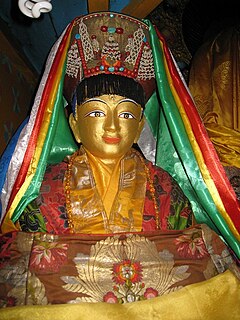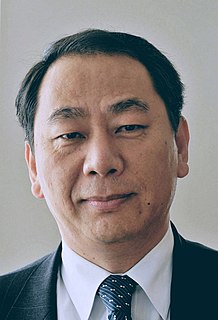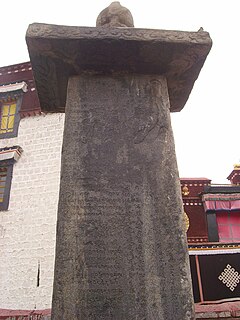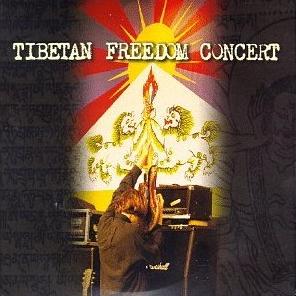 W
WThe 70,000 Character Petition is a report, dated 18 May 1962, written by the Tenth Panchen Lama and addressed to the Chinese government, denouncing abusive policies and actions of the People's Republic of China in Tibet. It remains the "most detailed and informed attack on China's policies in Tibet that would ever be written."
 W
WThe Third Bardor Tulku Rinpoche' was a Tibetan Buddhist teacher, a holder of the religious lineage of Terchen Barway Dorje. Rinpoche is the founder of a Tibetan Buddhist center, Kunzang Palchen Ling, and the Raktrul Foundation, in Red Hook, New York.
 W
WGeorge Bogle was a Scottish adventurer and diplomat, the first to establish diplomatic relations with Tibet and to attempt recognition by the Chinese Qing dynasty. His mission is still used today as a reference point in debates between China and Tibetan independence activists.
 W
WThe Central Tibetan Administration, often referred to as the Tibetan Government in Exile, is a non-profit political organization based in Dharamshala, India. Its organization is modeled after elective parliamentary government, composed of a judiciary branch, a legislative branch, and an executive branch.
 W
WThe Affair of the Dancing Lamas was an Anglo–Tibetan diplomatic controversy stemming mainly from the visit to Britain in 1924–25 of a party of Tibetan monks as part of a publicity stunt for The Epic of Everest – the official film of the 1924 British Mount Everest Expedition.
 W
WThe Ganden Tripa, also spelled Gaden Tripa, is the title of the spiritual leader of the Gelug school of Tibetan Buddhism, the school that controlled central Tibet from the mid-17th century until the 1950s. The 103rd Ganden Tripa, Jetsun Lobsang Tenzin died in office on 21 April 2017. Jangtse Choejey Kyabje Jetsun Lobsang Tenzin Palsangpo is the current Ganden Tripa.
 W
WKarma Kagyu, or Kamtsang Kagyu, is a widely practiced and probably the second-largest lineage within the Kagyu school, one of the four major schools of Tibetan Buddhism. The lineage has long-standing monasteries in Tibet, China, Russia, Mongolia, India, Nepal and Bhutan, with current centres in over 60 countries. The spiritual head of the Karma Kagyu is the Gyalwa Karmapa; the 2nd through 10th Karmapas were principal spiritual advisors to successive emperors of China. The Karma Kagyu are sometimes called the "Black Hat" lamas, in reference to the Black Crown worn by the Karmapa.
 W
WThe Kashag, was the governing council of Tibet during the rule of the Qing dynasty and post-Qing period until the 1950s. It was created in 1721, and set by Qianlong Emperor in 1751 for the Ganden Phodrang in the 13-Article Ordinance for the More Effective Governing of Tibet《酌定西藏善后章程十三条》. In that year the Tibetan government was reorganized after the riots in Lhasa of the previous year. The civil administration was represented by Council (Kashag) after the post of Desi was abolished by the Qing imperial court. The Qing imperial court wanted the 7th Dalai Lama to hold both religious and administrative rule, while strengthening the position of the High Commissioners.
 W
WGeshe Kelsang Gyatso is a Buddhist monk, meditation teacher, scholar, and author. He is the founder and former spiritual director of the New Kadampa Tradition-International Kadampa Buddhist Union (NKT-IKBU), an "entirely independent" modern Buddhist order that presents itself to be a tradition based on the teachings of the Gelugpa tradition of Tibetan Buddhism, which has grown to become a worldwide Buddhist organisation with some 1,300 centres around the world, most study and meditation centres, with some retreat centres.
 W
WDalai Lama is a title given by the Tibetan people to the foremost spiritual leader of the Gelug or "Yellow Hat" school of Tibetan Buddhism, the newest and most dominant of the four major schools of Tibetan Buddhism. The 14th and current Dalai Lama is Tenzin Gyatso, who lives as a refugee in India. The Dalai Lama is also considered to be the successor in a line of tulkus who are believed to be incarnations of Avalokiteśvara, the Bodhisattva of Compassion.
 W
WOrgyen Lingpa, was one of the greatest Tibetan tertöns or treasure-finders of the 14th century. "At the age of twenty-three he is said to have discovered an extensive treasure inventory at Samye Monastery in the Red Stupa." "He discovered texts, images, ritual objects and jewels, chiefly at Shetak, Yugang Drak, and Drachi Drakpoche. Of the 100 texts that were revealed by him, the Katang Denga are the most important to have survived. These five volumes chronicling the period of the Emperor Trisong Detsen include the Pema Katang, the most authoritative legendary biography of Guru Rinpoche. Orgyen Lingpa was born at Yarje in 1323. "
 W
WJetsun Milarepa was a Tibetan siddha, who was famously known as a murderer when he was a young man, before turning to Buddhism and becoming a highly accomplished Buddhist disciple. He is generally considered one of Tibet's most famous yogis and spiritual poets, whose teachings are known among several schools of Tibetan Buddhism. He was a student of Marpa Lotsawa, and a major figure in the history of the Kagyu school of Tibetan Buddhism. He is also famous for the feat of climbing Mount Kailash.
 W
WThe National Democratic Party of Tibet is a major party in the Tibetan government in exile, officially the Central Tibetan Administration, based in India.
 W
WLobsang Nyandak, sometimes written Lobsang Nyendak also called Lobsang Nyandak Zayul is a Tibetan diplomat and politician. born in 1965 in Kalimpong, India where he performed his studies in Herbertpur and at Panjab University in Chandigarh. There, he held functions at Tibetan Youth Congress before becoming the founding Executive Director of the Tibetan Centre for Human Rights and Democracy. Member of the National Democratic Party of Tibet, he was elected deputy and was selected as a minister by Samdhong Rinpoche, the first elected Kalon Tripa of Central Tibetan Administration (CTA). He then was the Representative of the 14th Dalai Lama to the Americas and became president of The Tibet Fund.
 W
WPadmasambhava, also known as Guru Rinpoche and the Lotus from Oḍḍiyāna, was an tantric Buddhist Vajra master from India who may have taught Vajrayana in Tibet. According to some early Tibetan sources like the Testament of Ba, he came to Tibet in the 8th century and helped construct Samye Monastery, the first Buddhist monastery in Tibet. However, little is known about the actual historical figure other than his ties to Vajrayana.
 W
WThe People's Party of Tibet is a political party in the Tibetan government in exile, officially the Central Tibetan Administration, based in India. In May 2011, Tenzin Rabgyal founded the People's Party of Tibet in an effort to bring plurality to the democratic process for Tibetans. The party currently holds 14 seats in the Tibetan parliament.
 W
WProtests and uprisings in Tibet against the government of the People's Republic of China have occurred since 1950, and include the 1959 uprising, the 2008 uprising, and the subsequent self-immolation protests.
 W
WSongs for Tibet: The Art of Peace is a music album with contributions from a number of musicians from throughout the world, including the United States, the United Kingdom, Canada, and South Africa. The artists include Sting, Garbage, Rush, Suzanne Vega, Jonatha Brooke, and Alanis Morissette. The album is an initiative to support Tibet, the promotion of peace, basic fundamental human rights, including freedom of speech and religion and the 14th Dalai Lama, Tenzin Gyatso. Songs for Tibet is a project from the Art of Peace Foundation in Washington, D.C. The executive director of the Art of Peace Foundation, Michael Wohl, is executive producer of the album. Producer Rupert Hine oversaw the musical direction of the project.
 W
WThe history of the relationship between imperial China and Tibet regime during the Tang dynasty and the Song dynasty is a diplomatic history between central China and Tibet.
 W
WTibetan Freedom Concert was a series of rock concerts between 1996 and 2001 to support the cause of Tibetan independence. This album covers the 1997 concert held in New York City. The album was recorded and produced by Pat McCarthy and Sylvia Massy, and mixed in New York City at Greene Street Studios.
 W
WThe Tibetan National Congress is a Tibetan political party in exile of pro-independence ideology founded on 13 February 2013. The party maintains more radical positions than the moderate pro-independence National Democratic Party and supported the candidacy of former political prisoner Lukar Jam for Sikyong in the 2016 elections, as the only one of the candidates that supports the full independence of Tibet and not just greater autonomy. Party leaders have described it as a political option for Tibetans of pro-independence ideas. The party is not represented in the Parliament of the Central Tibetan Administration.
 W
WPrincess Wencheng, is an ancient historical figure who holds great significance in China. Her story was recorded and written about in many ancient Chinese literatures.
 W
WWhat Remains of Us is a 2004 Canadian documentary film exploring the survival of the nonviolent resistance movement in Tibet. The documentary was shot over eight years without the knowledge of the Chinese authorities.